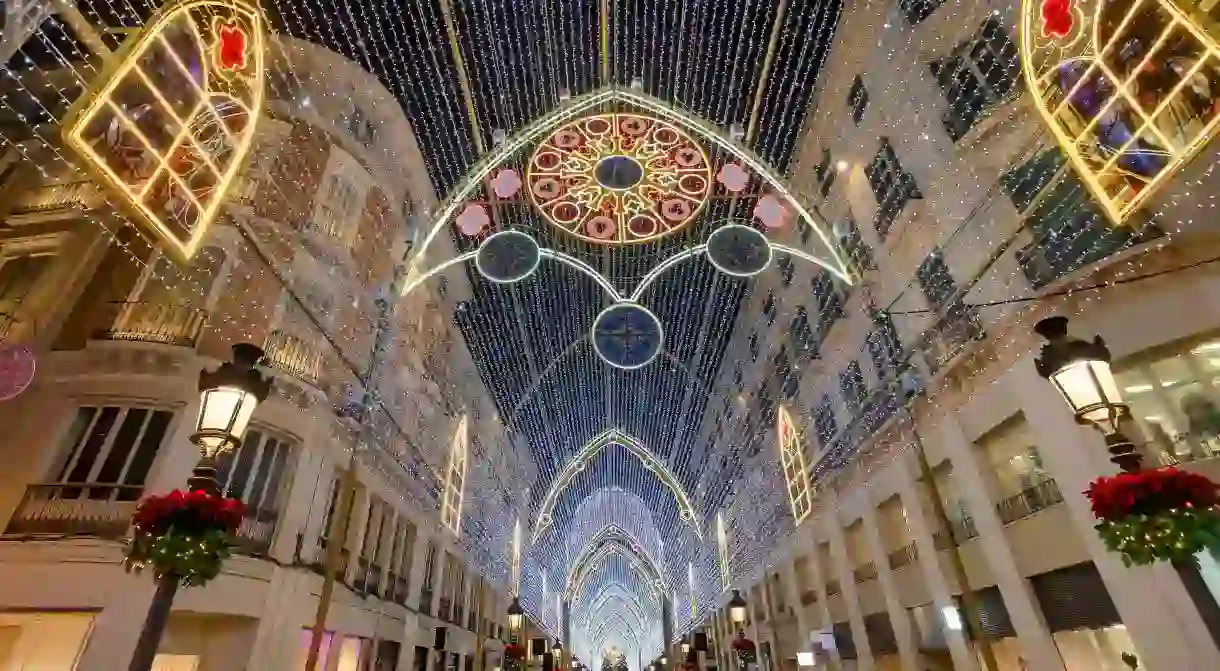Everything You Need to Know About Christmas in Spain

Christmas is a big deal here in Spain, where it’s seen first and foremost as a time for family gatherings and old friends. Aside from the major religious celebrations, there are a number of regional festivities and traditions to look forward to as well. If you don’t want to miss out on anything over the holiday season, read our guide to celebrating Christmas in Spain like a true local.
Getting in the Mood for Christmas
The Christmas season properly kicks off on December 8 in Spain, with the Feast of the Immaculate Conception. This day is a religious celebration, and many Catholics here attend church to mark the occasion. While there’s not much going on in terms of public celebrations on that day, it does very much signify the beginning of the festive season.
From then onwards, nativity scenes, Christmas lights, and all other kinds of holiday traditions commence in the build up to December 24th. Although not directly associated with Christmas, you may want to consider buying a ticket for the Christmas lottery, nicknamed El Gordo (the Fat One) in reference to the big prize. About three out of every four Spaniards enter the lottery, which is believed to be the largest in the world. The winners are drawn on December 22nd every year, and the total prize money available is upwards of €2 billion each year.

There are Christmas markets organized in all big towns and cities in Spain, and they tend to have remained quite traditional. Most markets sell a mixture of decorations, gifts, and usually Christmas trees too. Building your own nativity scene at home is also a popular Christmas tradition, and markets usually sell everything you need from miniature figurines to moss and straw for the manger.
Time to Go to the Market
Food plays an important part in Spanish culture any time of the year, but around Christmas, there are certain dishes and ingredients which are even more important. While nut season may be coming to an end, you’ll find that the stores fill up with the nut-based treat known as turrón. Made with honey and eggs, this seasonal treat is everywhere at Christmas, and any excuse for a little bit of turrón here and there is a good one.
Another favorite Christmas time treat is the polvorones and mantecados, a type of shortbread made using pork fat instead of butter and sold in a variety of different flavors: cinnamon, nut, citrus, etc.

Of course, the iconic Spanish cured ham jamón Iberico features heavily on the Christmas menu too, but now is the time to splash out on the more expensive kinds. Look for the mention of bellota, which means the ham was fed on acorns, giving it a distinctive nutty flavor, making it all the more mouthwatering.
This is the time of the year when seafood is also particularly appreciated, and there will be plenty to choose from at the market. Upgrade your regular prawns for Palamós prawns (from the port of Palamós in Catalonia) for extra approval, and try something a little different like the tiny tallarines or even razor clams.
Celebrating Christmas and the Three Kings
While Christmas Day is the celebration of the birth of Jesus, it is not the day for presents and gifts (unlike in the UK or North America). Instead, the 24th and 25th are days for feasting with family and close friends and also partaking in mass and religious celebrations. Many shops and businesses close early on the 24th, so be sure to give your season’s greetings before lunchtime. The 24th is also a great time to wander through the local market to witness the Christmas cheer in full swing.
In certain parts of Spain, December 26th is also a bank holiday known as Saint Stephen’s Day. In Catalonia, it is traditional for the family to gather once again on this day and eat cannelloni pasta stuffed with the leftover meats from the previous days’ celebrations.

For children, though, the most exciting part of Christmas is undoubtedly January 6th, known as the Epiphany, or Day of The Three Kings. This is a religious celebration of the arrival of the three Wise Men to visit baby Jesus, and it is customary for gifts to be given to children on that day in homage to the gifts brought by the Kings. In most towns and cities across Spain, a large parade is organized welcoming the arrival of the Kings, and children gather to greet them as they throw sweets and treats to those present. It’s also customary during this time to eat a special pastry known as Roscón de Reyes, a circular pastry filled with cream and covered with colorful candied fruit.













